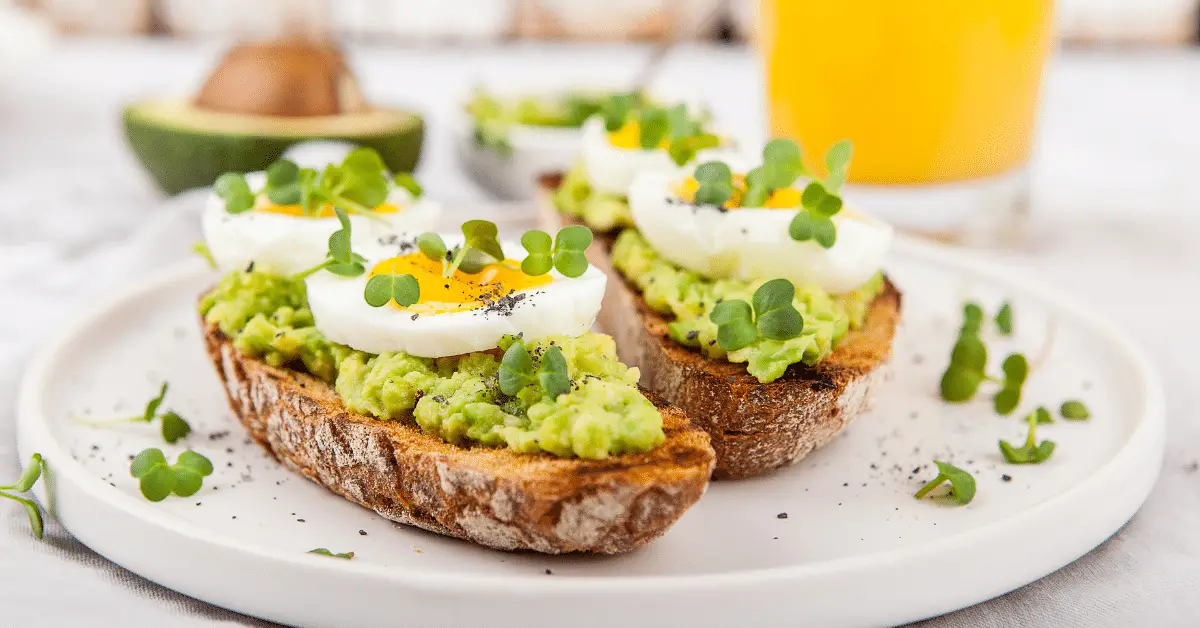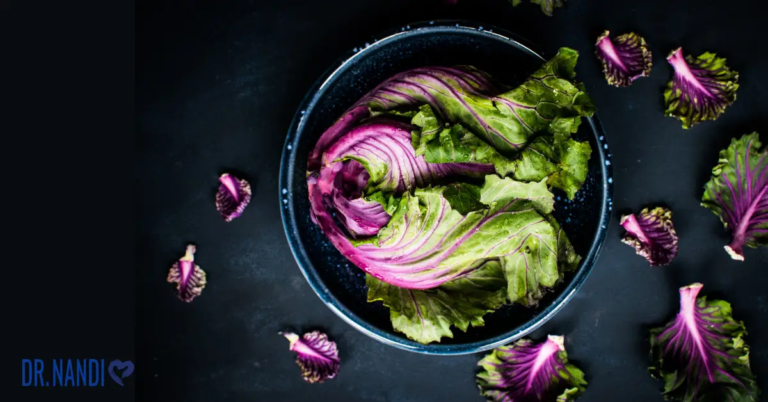What you eat affects your hormones and moods.
Hormones are important in controlling all our body’s activities, including growth, metabolism, stress regulation, sleep cycles, digestion, and reproduction. (2)
The Relationship of Diet and Hormones
Inside our bodies are trillions of microorganisms (also called microbiota or microbes) of thousands species. These include not only bacteria but also fungi, parasites, and viruses.
In a healthy human body, these “bugs” coexist peacefully, with the largest numbers found in the small and large intestines.
The microbiome is even labeled a supporting organ because it plays so many key roles in promoting the smooth daily operations of the human body. (1)
The microbiome is important in hormonal balance, particularly estrogen. The estrobolome is a group of bacteria within the microbiome that is responsible for estrogen metabolism in our gut. (3)
When this group is out of balance, it can lead to poor estrogen breakdown and metabolism, resulting in recirculation and, eventually, excess levels.
You may have different nutritional, digestive, and micronutrient needs each day of your monthly cycle.
Yet, all month, you can support a healthy microbiome by:
- Keeping alcohol consumption to a minimum (5, 8)
- Only using antibiotics when necessary (6)
- Avoiding ibuprofen (7)
- Avoiding processed, high-sugar foods and meat (8)
- Eating a diet rich in prebiotic foods, such as garlic, onion, leeks, asparagus, globe artichoke, and green tea (6)
- Eating a diet rich in probiotics, such as sauerkraut, kimchi, kefir, kvass, kombucha, yogurt, and sourdough bread (9)
- Avoiding canned foods (9, 11)
- Avoiding oils & fats packaged in plastic
- Avoiding chemicals and non-natural foods, chemical-laden household cleaners, and non-natural personal care products. It’s also encouraged to use a good water filter. (10, 11)
The wrong foods can deplete your key hormone-balancing micronutrients, spike your cortisol and insulin levels, and disrupt your endocrine function and insulin resistance, putting your hormones out of whack. (12)
But, if you learn new recipes and meals, you can come out of survival mode and hormonal chaos into a better and more expansive version of yourself — where you can thrive instead!
Dr. Nandi’s Superfoods Cookbook can empower you to take care of your health without spending too much time in the kitchen while saving you time, money, and stress.

What Nutritionists Eat to Promote Hormone Balance
It’s a great idea to study what nutritionists and dieticians favor. Here are 10 common foods you will find throughout their lists of healthy meal plans.
1. Avocados
Just half an avocado a day can lower the absorption of estrogen. This fruit is rich in healthy fat and fiber, which helps balance the hormones overall.
Lowering the absorption of estrogen is especially important because estrogen excess may cause the following symptoms:
- Breast tenderness
- Fibrocystic lumps in your breasts
- PMS
- Heavy periods and blood clots
- Fibroids
- Endometriosis
- Acne
- Weight gain and obesity
- Fluid retention (14)
Avocado is a nutrient-dense food, rich in minerals, protein, vitamins, β-sitosterol, and polyphenols that promote overall hormonal health and wellness. (13)
2. Legumes
Legumes such as chickpeas or mung beans provide a weaker form of estrogen that regulates your total estrogen load.
They do this by binding to your estrogen receptor and preventing estradiol (E2), a more potent estrogen produced primarily by your ovaries, from binding to the estrogen receptor.
Doing this reduces the negative side effects associated with excess estradiol and hormonal imbalance. (15)

3. Eggs
Eggs are one of the best foods for balancing insulin and ghrelin hormones in the body. Insulin controls blood sugar levels, while ghrelin controls your appetite. Eating eggs specifically for breakfast can help lower these levels. (16, 17)
4. Quinoa
Quinoa is a gluten-free carbohydrate full of protein, phosphorus, iron, fiber, magnesium, and all nine important amino acids. It is great for balancing hormones, maintaining female testosterone levels, regulating blood sugar levels, and regulating cortisol and energy levels.
It can also aid restful sleep and curb appetites, simultaneously keeping all hormone levels in check. (18, 19, 20)
5. Almonds
Almonds are especially beneficial for women who have noticed their skin is drier and thinner than usual.
Almonds help increase the level of adiponectin, a hormone that regulates blood sugar levels and lowers testosterone levels, which may be causing these changes. (21)

6. Broccoli
An important element of broccoli is sulforaphane. Sulforaphane increases liver detoxification pathways and helps fatty livers, which are critical for breaking down estrogen. (22)
7. Apples
Apples are a good source of quercetin, an antioxidant that reduces inflammation and assists daily in increasing the antioxidant capacity of the ovaries.
They also contain other phytochemicals, including catechin, phloridzin, and chlorogenic acid, all of which are strong antioxidants.
Research shows that apples are nutrient-dense, packed with vitamin C, which is essential in producing progesterone, the hormone responsible for reducing depression and anxiety. (23, 24,25)
8. Blueberries
Blueberries are loaded with vitamin B6, which assists in the production and balancing of progesterone.
Estrogen stimulates mast cells to produce more histamine, which consequently stimulates the production of more estrogen. It’s a cycle that vitamin B6 also may help to break. High histamine can contribute to PMS.
Blueberries are also loaded with flavonoids and antioxidants and are high in vitamin C and potassium, making them great support against inflammation during “that time of the month.” (26, 27)
9. Leafy Green Vegetables
Leafy green vegetables such as kale, chard, broccoli, and spinach are high in dietary fiber and are excellent hormone-balancing foods. They help normalize sex hormones, such as estrogen and progesterone, by improving hormone metabolism. (28)
10. Seeds
Lignans are compounds found in seeds such as flax, pumpkin, and sesame. They help normalize estrogen levels by removing excess estrogen and stimulating estrogen production when there isn’t enough.
You may have an estrogen imbalance if you have low energy, mood swings, or sudden weight gain. Seeds can aid in the stabilization of your estrogen levels and the correction of hormonal imbalances. (29)
Nutritional Knowledge
With a little bit of knowledge, you can outsmart fluctuating hormones and a sluggish metabolism, finally transforming your body and your health.
Dr. Nandi’s Superfoods Cookbook can help you get your hormones aligned, with support on the website when making changes to what you eat.
A healthy diet is essential for balancing hormones, and there simply is no substitute for it. You can easily start with one or two changes and gradually build from there.

Sources:
- https://www.ncbi.nlm.nih.gov/pmc/articles/PMC3426293/
- https://my.clevelandclinic.org/health/articles/21201-endocrine-system
- https://pubmed.ncbi.nlm.nih.gov/28778332/
- https://www.ncbi.nlm.nih.gov/pmc/articles/PMC7971312/
- https://www.sciencedirect.com/science/article/abs/pii/S2214799320300783
- https://www.frontiersin.org/articles/10.3389/fcimb.2020.572912/full
- https://www.ncbi.nlm.nih.gov/pmc/articles/PMC4083657/
- https://www.bmj.com/company/newsroom/diet-rich-in-animal-foods-alcohol-and-sugar-linked-to-inflammatory-gut-microbiome/
- https://med.stanford.edu/news/all-news/2021/07/fermented-food-diet-increases-microbiome-diversity-lowers-inflammation
- https://www.healthline.com/nutrition/microbiome-diet#foods-to-eat
- https://www.indiatvnews.com/lifestyle/health-how-eating-canned-foods-may-up-intestinal-disorder-risk-451401
- https://www.ifm.org/news-insights/nutrition-impacts-hormone-signaling/
- https://www.mdpi.com/2072-6643/13/12/4376/htm
- https://remede.com.au/signs-of-oestrogen-dominance-and-how-to-change-it/
- http://jmclachlan.tulane.edu/PDFs/boueetal2003.pdf
- https://pubmed.ncbi.nlm.nih.gov/20226994/
- https://www.researchgate.net/publication/41942513
- https://www.ncbi.nlm.nih.gov/pmc/articles/PMC4573157/
- https://odettebulaongnd.com/nutrition_hormone_balance_recipe_easy/
- https://www.sciencedirect.com/science/article/abs/pii/S0733521013001525
- https://www.nature.com/articles/ejcn2010266
- https://www.ncbi.nlm.nih.gov/pmc/articles/PMC4572790/
- https://www.ncbi.nlm.nih.gov/pmc/articles/PMC442131/
- https://pubmed.ncbi.nlm.nih.gov/15140261/
- https://www.uchealth.org/today/wp-content/uploads/sites/6/1970/01/Antioxidants-of-Apples.pdf
- https://pubmed.ncbi.nlm.nih.gov/30669469/
- https://doctortaz.com/4-hormone-balancing-foods/
- https://pubmed.ncbi.nlm.nih.gov/17640158/
- https://pubmed.ncbi.nlm.nih.gov/21889775/











 Subscribe to Ask Dr. Nandi YouTube Channel
Subscribe to Ask Dr. Nandi YouTube Channel










